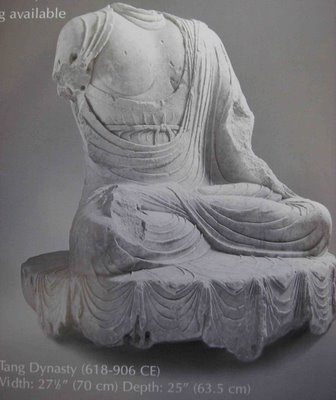
The Courage and the Composure of Mind, in the face of death, of the Zen Monk, and of the Samurai, is illustrated by this anecdote about Tsu Yuen (So-gen), who came over to Japan in 1280. The event happened when he was in China, where the invading army of Yuen spread terror all over the country. Some of the barbarians, who crossed the border of the State of Wan, broke into the monastery of Tsu Yuen, and threatened to behead him. Then calmly sitting down, ready to meet his fate, he composed the following verses:
"The heaven and earth afford me no shelter at all;
I'm glad, unreal are body and soul.
Welcome thy weapon, O warrior of Yuen!
Thy trusty steel, That flashes lightning,
cuts the wind of Spring, I feel."
This reminds us of Sang Chao (So-jo), who, on the verge of death by the vagabond's sword, expressed his feelings in the follow lines:
"In body there exists no soul.
The mind is not real at all.
Now try on me thy flashing steel,
As if it cuts the wind of Spring, I feel."
The barbarians, moved by this calm resolution and dignified air of Tsu Yuen, rightly supposed him to be no ordinary personage, and left the monastery, doing no harm to him.






























